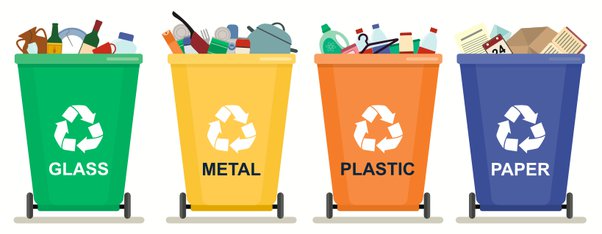What Exactly Does Waste Management Entail?
In basic terms, trash, sewage, and other waste can be collected, moved, and thrown away. Every year, Americans make a huge amount of trash: 277 million tones (annually). Because this number is much higher than anywhere else on Earth, the US government and environmental groups have devised several ways to deal with it.
Both solid and liquid waste must be processed as part of the process of managing waste. It also gives people many options for recycling things that aren’t trashed during the recycling process.
So, the idea is based on turning trash into a useful resource, which is important for all homes and businesses to be given the state of the environment right now.
Different Ways To Deal With Trash
Each type of garbage requires a distinct method of removal. Because of this, it should be taken care of by a company that knows what it’s doing.
Recycling
Recycling includes both material recycling (getting raw materials out of the trash) and the direct reuse of old things like used clothes and parts from used cars that can still be used (e.g., production of new glass from fragments, the melting of scrap iron and the production of recycled building materials from construction waste). Downcycling is the process of turning waste into resources that are worth less than the resource they came from.
Recycling means reusing or reclaiming things that would otherwise be thrown away. There are three recycling ways: energy recovery, biological reprocessing, and physical reprocessing.
It is good for the environment to recycle. It supports programs that aim for zero waste and environmental goals, which cuts down on the amount of trash that must be thrown in landfills. Physical recycling is prevalent. In this method, waste is turned into raw materials for new products.
Recycling decreases the need for landfills and incinerators, saves energy, gives industry essential raw materials, and creates jobs. It also cuts down on water pollution. For example, by recycling solid waste, the United States kept 33 million tones of carbon from going into the air in 1996. That’s almost as much carbon as 25 million cars produced each year.
Recycling can make useful things and has many benefits for the environment, the economy, and society. Paper, glass, plastic, metal, and other materials are collected, sorted, and taken to processing plants, turning them into new products.
Recycling has a lot of benefits, such as saving resources for future generations, reducing the need for new landfills and incinerators, preventing greenhouse gas and pollutant emissions, saving energy, giving industries access to valuable raw materials, and helping to develop greener technologies.
Waste From Plants

Organic matter can also be made when things like plants, food scraps, and paper items break down. This way of recycling makes organic matter that can be used in many different fields, such as agriculture. People often put trash in a certain container and leave it there until it breaks down.
Fuel From Trash
Waste-to-energy recovery is the last type of recycling technology. In the waste-to-energy process, the trash that can’t be recycled is turned into fuel, electricity, or heat through several steps. This type of energy is a renewable energy source because it can be made repeatedly from the trash that can’t be recycled.
Waste In General
General waste is trash that isn’t dangerous, smelly, contaminated, or recyclable. Most of it is thrown away in landfills after being picked up by city governments or private companies. A national waste strategy is in place to cut down on the amount of trash that ends up in landfills. This is done through reusing and recycling and spreading the word about why recycling is important.
Always get rid of regular trash safely and legally. Garbage is put in black and wheeled bins or skips until it is picked up. It is against the law to throw away dangerous things with the regular trash.
Waste Streams
Home and commercial liquid waste are plentiful. This waste comprises unclean water, animal fluid, wash water, and rainwater. Liquid waste can arise from one or many sources. All liquid waste from factories is called point source waste. On the other hand, non-point source waste is a natural liquid waste.

